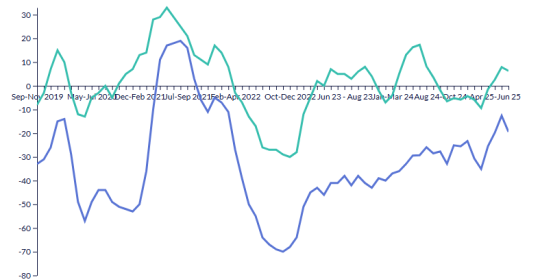• 5 year job boom fuelled by Chinese demand and consequent market volatility
• 37% increase in number of women employed in the sector
While the British economy has flagged and the banking and automotive sectors have been in meltdown, the energy sector has grown during the economic turmoil according to global executive search firm, Kinsey Allen International.
While employment in the UK has grown by only 0.1% over the last five years, figures from the Office of National Statistics analysed by the Kinsey Allen research team show employment in the energy sector has risen by 14.7% over the same period. In the fourth quarter of 2004, the industry employed 170,000 people. 20 quarters later, this has risen to 195,000.
The downturn hasn’t been without its problems. The figures show a dip in employment in the energy sector during the first half of 2009. The economic downturn reduced industrial output and this in turn has reduced industrial demand for electricity and natural gas. But Kinsey Allen International say there are many reasons why this was only a temporary blip.
Mark Tomlinson, Global Head of the Energy, Commodities, and Environmental practice said: “In the short term, the sector was protected by sustained residential demand. But in the longer term, growth has been driven by the past decade’s key macro-trends in European utilities: international expansion, deregulation, and competition for both customers and suppliers. The key to the sector’s growth over the last five years though, has been China. China changed everything. And when the recession came, its utilities sector - which is largely controlled by state investment vehicles – took advantage of the decreased commodity prices and global financing issues to expand their natural resources and utilities infrastructure. Energy jobs will continue to be created in the UK and globally as demand from the BRIC economies – particularly China and India – increases.”
FRAUD
Kinsey Allen International has also seen an increase in hires focused on fraud detection. As the masking effect of economic growth has been withdrawn, pressures from businesses to drive results, combined with tighter bonus criteria, have increased the incentives to commit fraud.
John O’Dwyer, the European Head of Kinsey Allen International’s energy team, said: “Any downturn exposes more fraud. As the global credit crisis changes day-by-day many individuals and businesses are forced to make non-routine decisions in times of uncertainty. Regulators are conscious of the shortcomings in corporate governance and have positioned themselves for much more aggressive enforcement action. Companies have therefore hired people to identify, assess, and manage the risks associated with fraud and misreporting activity.”
VOLATILITY
Wider job growth in the energy sector has been triggered by the massive volatility in commodity prices caused by global supply failing to keep up with the growth in demand. Global commodity prices have been through an extraordinary cycle of boom and bust since China’s economic boom started to increase demand. Monthly crude oil prices reached highs of $132 a barrel in July 2008, falling to $42/barrel in December 2008, and rebounding to around $77/barrel in January 2010 . Most other fossil fuel prices have experienced a similar cycle, particularly gas and electricity prices in the UK.
Mark Tomlinson said: “Many of the 25,000 jobs that have been created are a response to this volatility. On the one hand tight credit markets are limiting investment opportunities, on the other a decline in industrial demand and increased commodity volatility is stretching utilities’ risk management activities. To find the money to invest in development they have had to mitigate these risks while improving normal business practices. Industrial customers have also started having to hedge against cost increases so they’ve been hiring experts to manage their energy risks. Additionally banks and pension funds that were never interested in energy have moved into the sector or grown their teams. Many of these pension funds are expected to increase flows into energy markets from 1% to 4% in the upcoming years. In nominal terms, that represents a huge amount of money coming into the market.”
BATTLE OF THE SEXES
Over the same period, the number of women working in Energy has increased 37%. In the fourth quarter of 2004, there were only 38,000 women employed in the Energy & Water sector. This has now increased to 52,000. The number of men increased by only 8%. 27% of the energy workforce is now made up of women. Five years ago, only 22% of the workforce were women. Thirty years ago, only 12% of the workforce were women.
John O’Dwyer said: “There’s a long way to go and women are still underrepresented in Energy, but the tide is turning. Renewables are leading the way with high profile women operating at the top of the field - Juliet Davenport, the CEO of Good Energy is a prime example. The looming Equality Bill is also playing its part. Companies are becoming more conscious that once the bill is passed, winning a public sector contract could come down to equality rather than price. Utilities are gearing up for that and getting their houses in order so they don’t suffer commercially - but the main driver is the change in attitude.”






